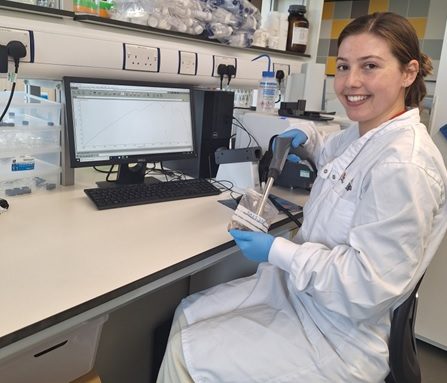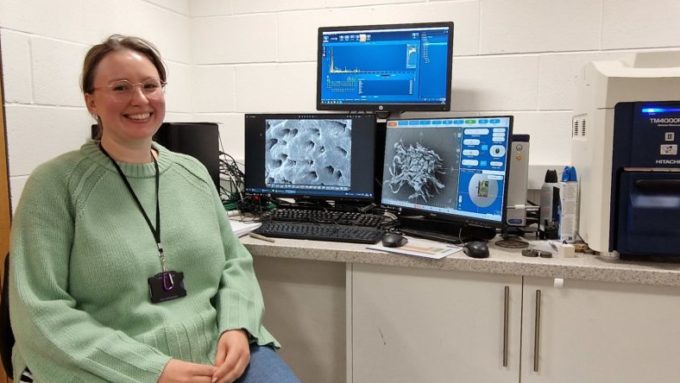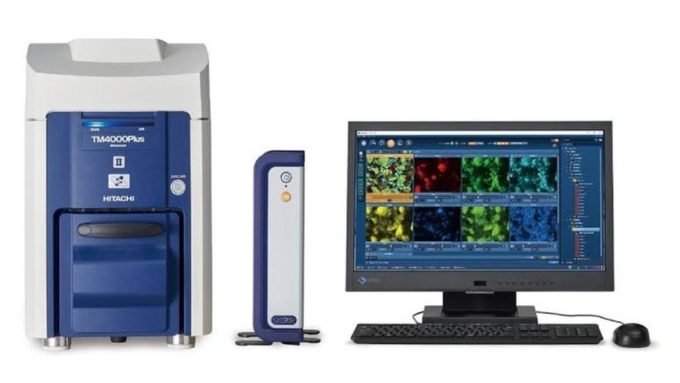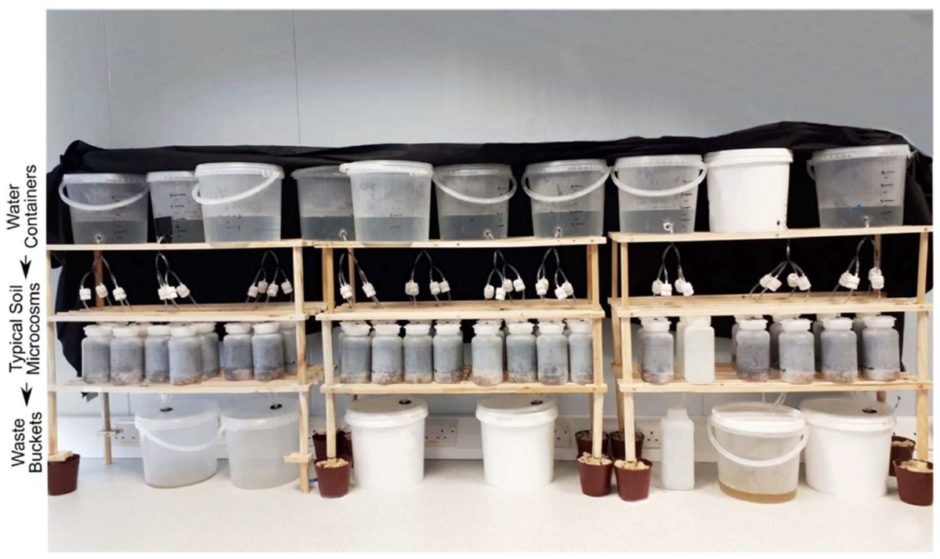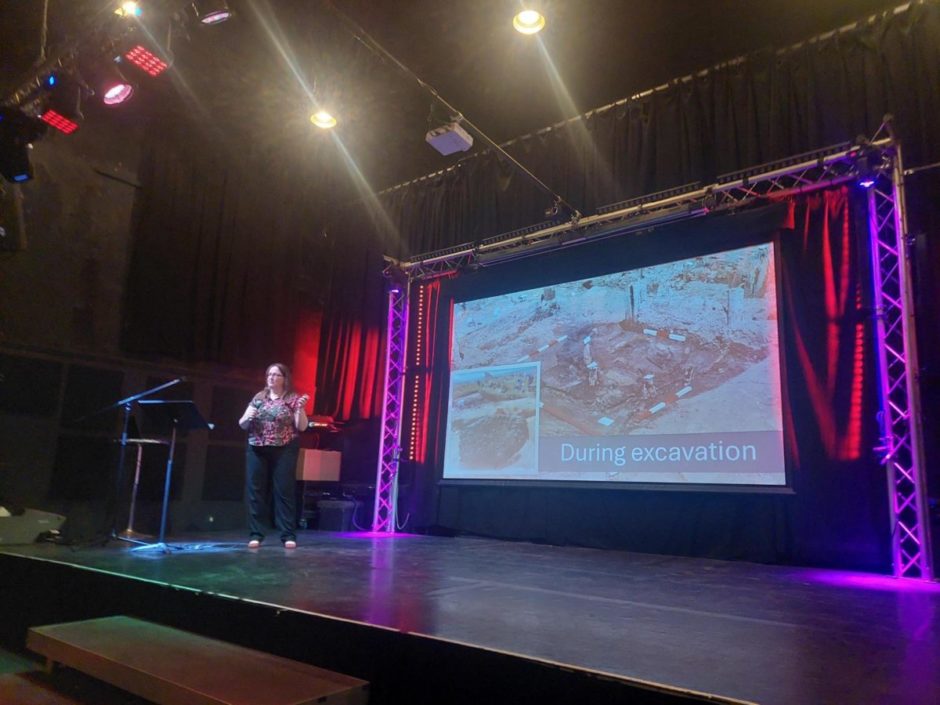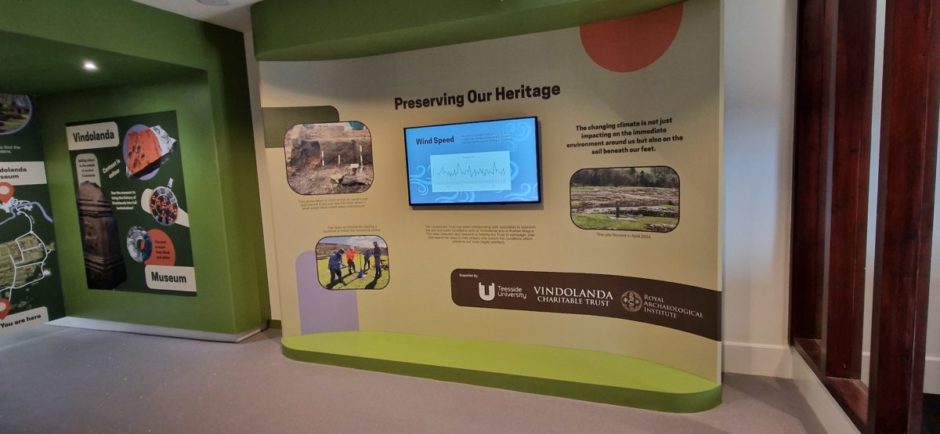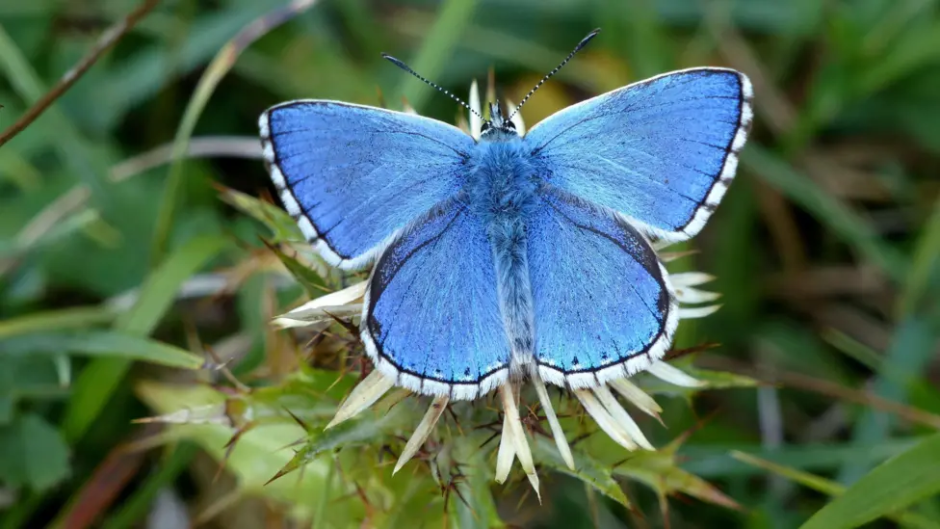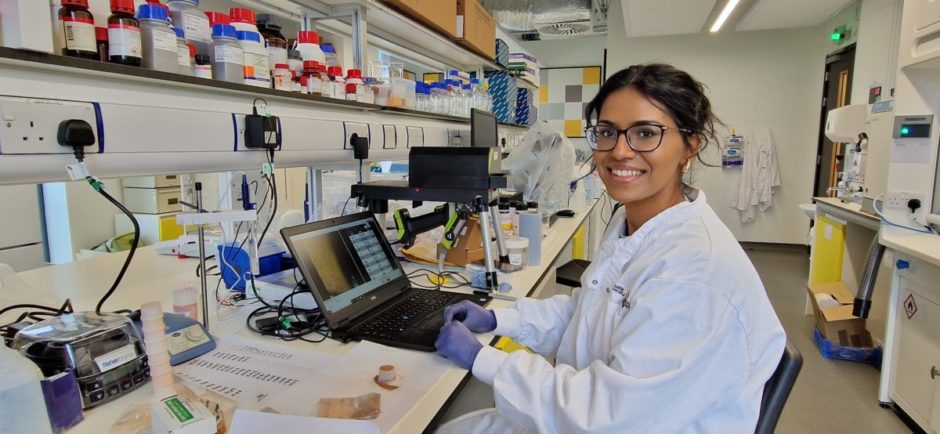In April 2025 Beth Hinnigan joined the laboratory for a 5-month internship as part of the Teesside University graduate internship scheme to work as a soil scientist. As an Environmental Science graduate this opportunity will… More
New paper: Determining the impact of elemental composition on the long-term survival of vegetable-tanned leather in archaeological environments
Very pleased that a paper that took an enormous amount of setting up, monitoring and determination has finally been published in Archaeometry.
The rather long title is ‘Determining the impact of elemental composition on the long-term survival of vegetable-tanned leather in archaeological environments.‘
This paper started as what do we understand about leather degradation, to how we can look at this in the laboratory into a full scale microcosm set up in the laboratory. Helga set up and monitored these systems, each having a different variable, coupled with multiple variables of leather types.. it was a spreadsheet nightmare..
Abstract
This research paper investigated whether elemental analysis can differentiate leather manufacturing from soil contamination and whether soil hydrology and elemental composition impact degradation of leather. Portable X-ray fluorescence (pXRF) is a quick method for monitoring large-scale changes and groupings of aggregate inorganic elemental signatures, as well as influx of soil-based elements into the leather samples. Soil elements appeared to leach into vegetable-tanned leather within 2 months of burial, following pathways that are primarily dictated by soil hydrology (acidity, redox and saturation). Leather stability was also traced to elemental concentrations prior to burial, most likely introduced through the tanning liquid, and via a contributory factor of perimineralisation in the soil.
Pint of Science 2025
I really enjoy public outreach and there is no better way than the pint of science events, held in May every year.
This year, I was asked to do a talk for the Darlington Pint of Science event and I dreamt up the title of ‘Leather – the plastic of the roman era’. Firstly, I love archaeological leather and second, I love the romans! I am not quite sure what I was thinking when i dreamt up the title, but I think my thoughts were around the the large amount of leather which still survives today, and thinking about how romans used leather, then linking that to what will people find from us in 2000 years!
We went on a rollercoaster during the talk, from different shoes, to what you would take camping, and then explored how you could differentiate leather species using mass spectrometry.. that is alot in 20 mins!
Pleasure to be on the stage with Dr Caroline Orr and Dr Zoe Bell

Environmental Monitoring – Vindolanda
In 2021 we started a journey of environmental monitoring at Vindolanda. The journey started with questions on what was happening across the site many years earlier, but the decision taken by the Vindolanda Trust to fully engaged in continuous environmental monitoring was bold and forward thinking.
I joined the Trustee board in 2022 and followed the journey as projects have developed, including around climate change and art, artefact degradation and how this has impacted and shaped the strategic plan for the trust 2024-2034.
It was an absolute pleasure to see the new west gate entrance, where the underpinning science is presented to the public, through the amazing design capabilities of the Vindolanda trust staff.

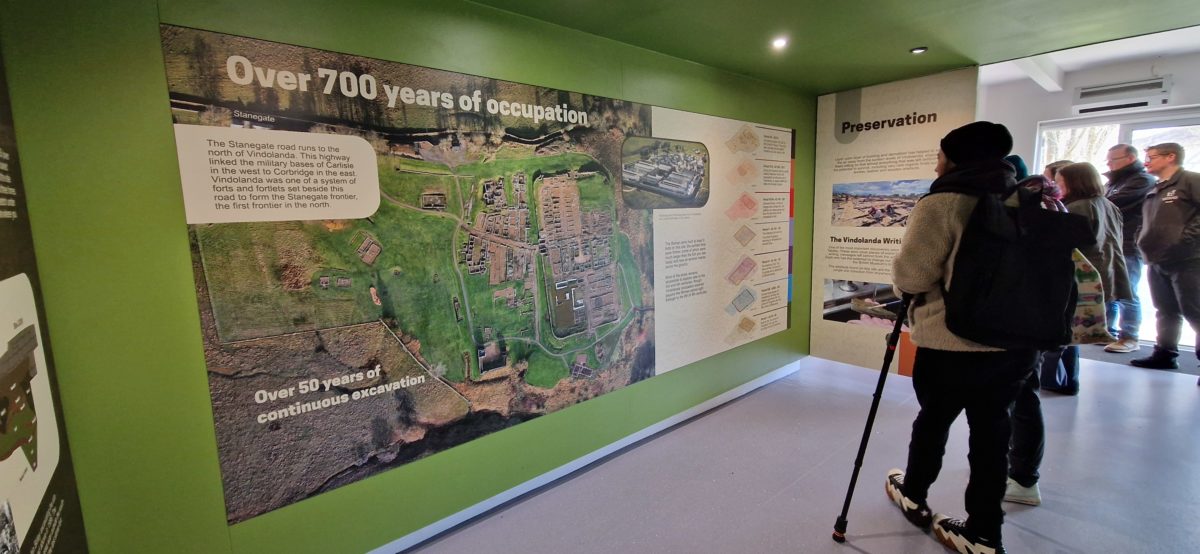
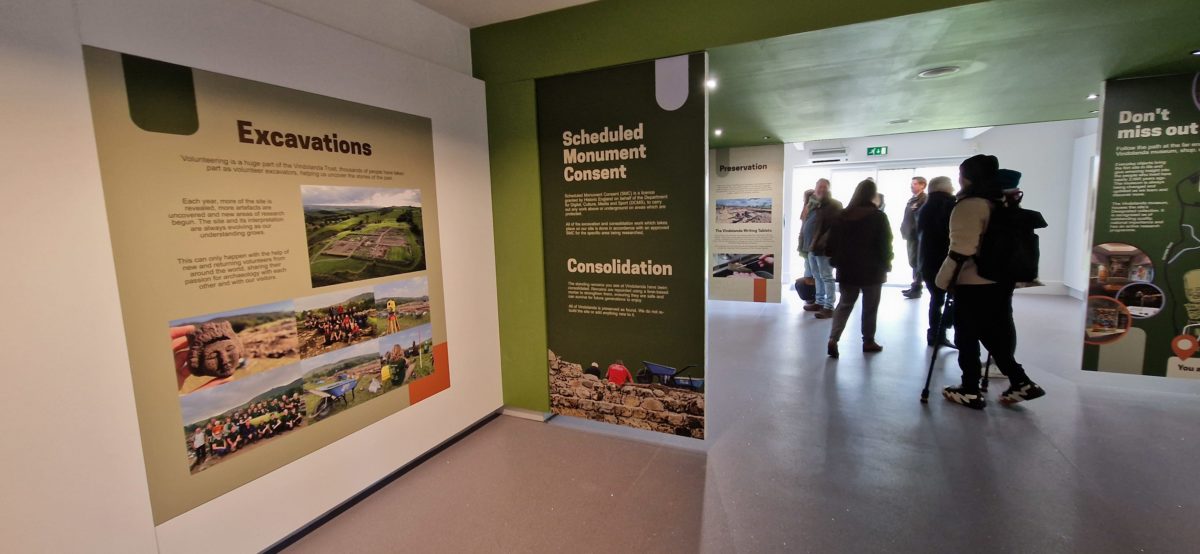
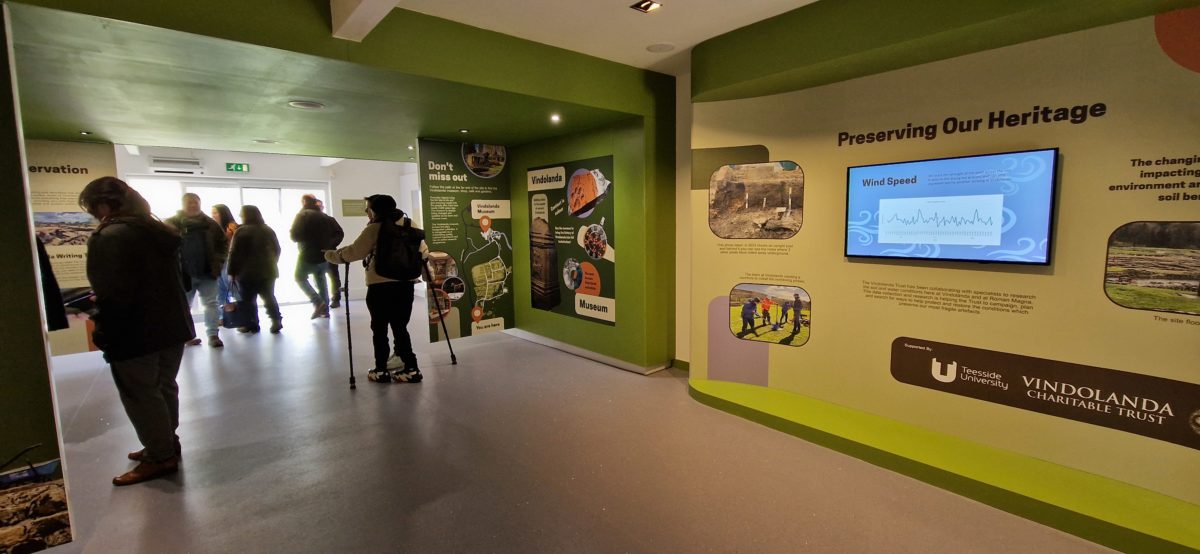
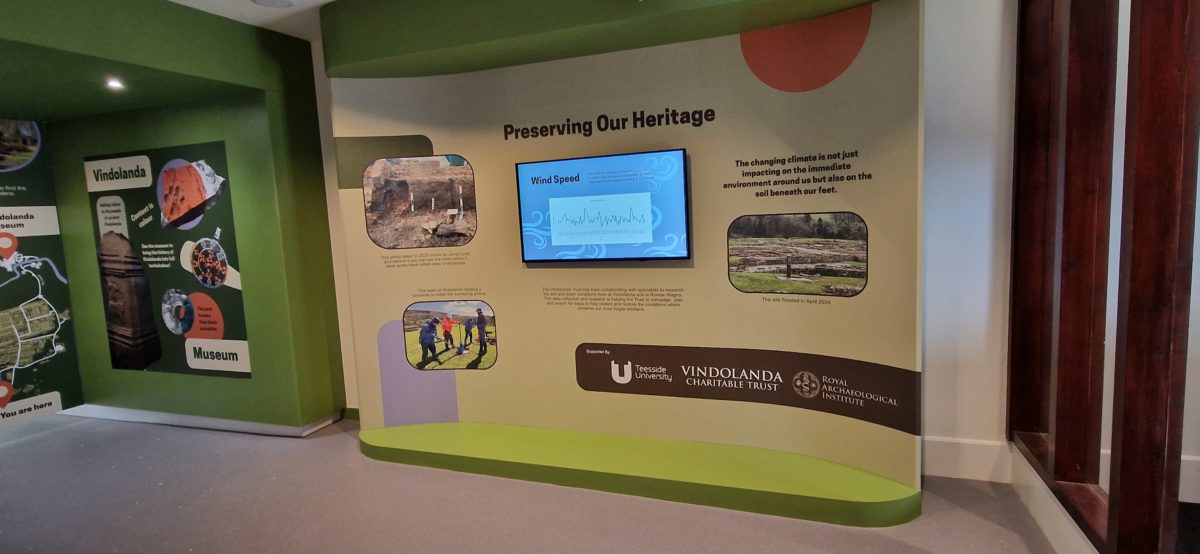
2024 – more than 150 unprecedented climate disasters
Two posts about climate in one day.. but it is that important for us to look at..
- Key climate change indicators again reach record levels
- Long-term warming (averaged over decades) remains below 1.5°C
- Sea-level rise and ocean warming irreversible for hundreds of years
- Record greenhouse gas concentrations combined with El Niño and other factors to drive 2024 record heat
- Early warnings and climate services are vital to protect communities and economies
This is a sobering yet fantastic read: state of the climate report 2024
There is a short commentary here – Floods, heatwaves and supercharged hurricanes occurred in hottest climate human society has ever experienced
Image: Coastal side of Skara Brae – Neolithic houses on a very exposed site, susceptible to coastal erosion
Climate change and Heritage
Every morning I look at the news.. today seems like a day when climate is everywhere, but one story on the BBC that I missed in December, was about the national trust warning about the lost of heritage.. important read for us all
National Trust warns UK’s most precious heritage at risk from extreme weather
Image – taken from BBC report and website
Internship – Thenigha
In 2024, the laboratory had the pleasure of hosting Thenigha Suriyakumaran for a 6 month internship. Thenigha was able to develop skills in many different techniques, including chromatography, mass spectrometry, pxrf and elemental analysis, enhancing her CV, however, the most important learning aspect was seeing how an active and busy research laboratory operates.
If you are unsure about where you want to go, have a look at: https://www.tees.ac.uk/sections/stud/ There is loads of support available.
BBC Radio 3: Vindolanda Leather
What I love about my job is the range of people I meet and the interest in my laboratory work.. had a lovely chat with Rose Ferraby who is the creator of the series Earthwork on BBC Radio 3. Rose was interested in our leather research work, this is conducted with Dr Elizabeth Greene, Western Ontaro. The chat was transcribed into a great programme which is part of the Earthworks series.. highly recommended for a 15 minutes break and a cup of tea.
The series of EarthWorks aired the other week, but still available online
The link to the series is here: https://www.bbc.co.uk/programmes/m0015v2l/broadcasts/upcoming
The link to your episode is here: https://www.bbc.co.uk/programmes/m0026ykc
And the link to previous series of EarthWorks here: https://www.bbc.co.uk/programmes/m0015v2l/episodes/player
We all love leather shoes right…

New paper
I know it has been a busy start to the new year.. second paper of the year..
This new paper, marks the last of the thesis paper from Dr C Bisker, Comparative soil bacterial metabarcoding after aboveground vs. subsurface decomposition of Mus musculus
Abstract
Outdoor microcosms, metabarcoding with next-generation sequencing of the 16S rRNA bacterial gene, total body score (TBS) and physicochemical analyses were used to monitor Mus musculus decomposition aboveground (A) and in the subsurface (S), and compared to soil-only controls (C). As determined by MaAsLin2 analysis, significant shifts in bacterial communities at 30 cm depths within the A, S and C treatments distinguished control from experimental soils, and between aboveground and subsurface deposition, demonstrating the potential for gravesoil discrimination during the first 90 days. For example, Dokdonella (p = 0.0002), Edaphobaculum (p = 0.0004) and Lacibacter (p = 0.0034) recorded significant shifts relative to sampling time. Furthermore, Massilia (p = 0.0005), Mycobacterium (p = 0.0006) and Sandaracinus (p = 0.0007) increased in abundance for the aboveground mice treatments. This was confirmed with ANOSIM where p = 0.0082 showed statistically significant difference between the aboveground and subsurface deposition. TBS and physicochemical analyses suggested that nutrient release into the soils occurred during active decay and skin rapture on days 7–13 in the subsurface and days 13–20 aboveground, with a particular increase in soil potassium concentration on day 15. Significant differences in soil temperatures resulted between A and S vs. C microcosms, aligning with atmospheric temperature changes. In summary, complementary application of metabarcoding, total body score, exogenous and physicochemical methods for postmortem interval estimation and clandestine grave location highlighted the feasibility of using temperature records downloaded from meteorological stations and portable X-ray fluorescence as indicators for various phases of decomposition.

New Paper
New paper
Rhys started his PhD work in 2017 and one of the things that was always at the forefront of our thinking, was the impact was bones diagenesis.. diagenesis is so complex, but this is one paper that helps pull together variable which impact.. so really pleased it is finally out..
Bone Diagenesis and Extremes of Preservation in Forensic Science

New Book published
It is with great pleasure to announce the publication of a book chapter in:
The Bloomsbury Handbook of Experimental Approaches to Roman Archaeology
At the AIA I was able to finally to get my hands on it, as the first print run sold out..
the volume has some amazing chapters, including ‘Chapter 11: Roman Leather Manufacture and the Archaeological Record: An Experimental Approach
Hrafnhildur Helga Halldórsdóttir and Gillian Taylor (Teesside University, UK)’


